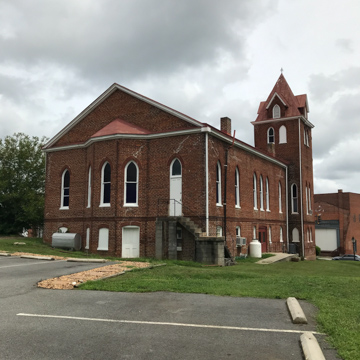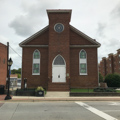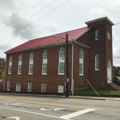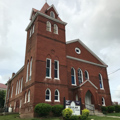Two predominately Black churches founded in the half decade after the Civil War are representative of the plain but styled buildings constructed for less wealthy congregations. The First Baptist Church (100 S. Main) is a rectangular, gable-end structure with a central front entrance tower, all done in stock brick with cream mortar. The windows have pointed arches except for a circular window in the tower. Beulah AME (115 S. Main) has a restrained Gothic Revival facade. Built of pressed brick with red mortar, it has a multistage tower beside the pedimented gable-end front. Both churches were active in the civil rights movement, and First Baptist's Reverend L. Francis Griffin was Southside's principal desegregation leader.
You are here
South Main Street Churches
c. 1890 First Baptist Church; 1901 Beulah African Methodist Episcopal Church (AME). 100 and 115 S. Main St.
If SAH Archipedia has been useful to you, please consider supporting it.
SAH Archipedia tells the story of the United States through its buildings, landscapes, and cities. This freely available resource empowers the public with authoritative knowledge that deepens their understanding and appreciation of the built environment. But the Society of Architectural Historians, which created SAH Archipedia with University of Virginia Press, needs your support to maintain the high-caliber research, writing, photography, cartography, editing, design, and programming that make SAH Archipedia a trusted online resource available to all who value the history of place, heritage tourism, and learning.


















